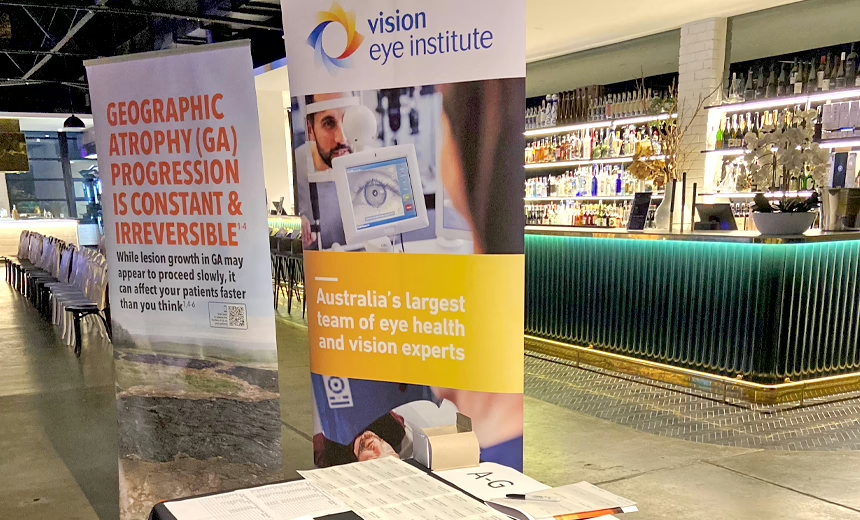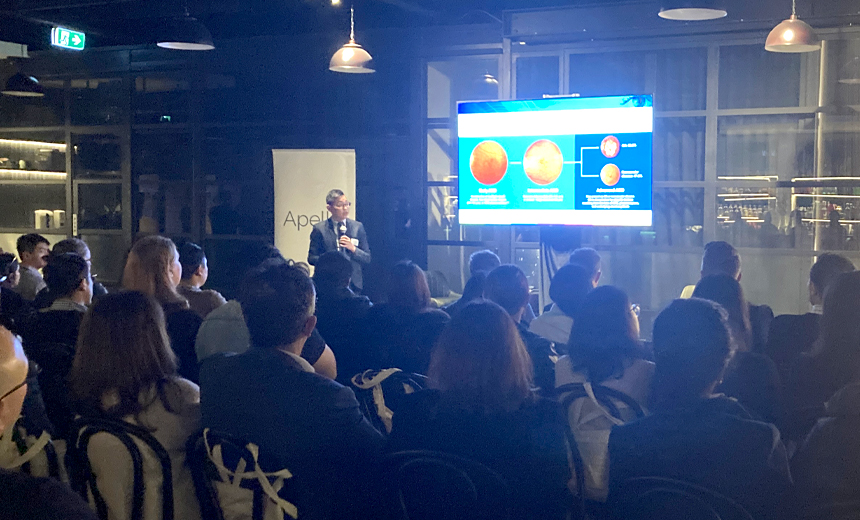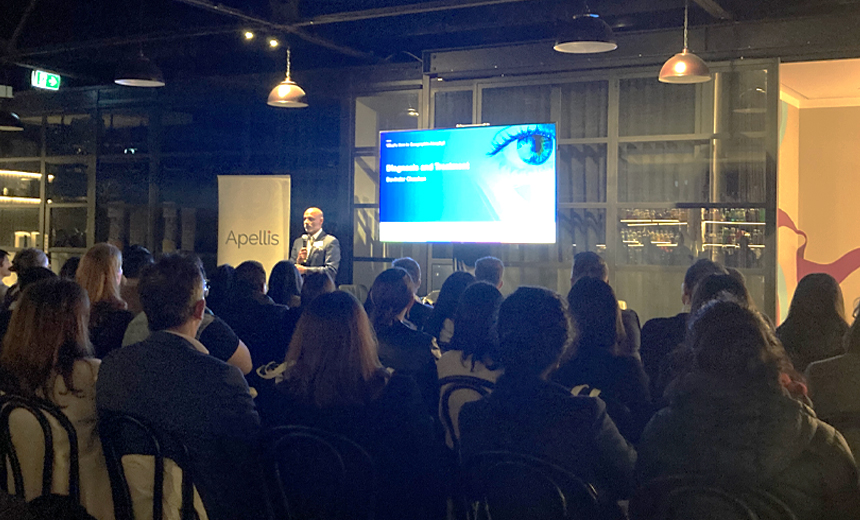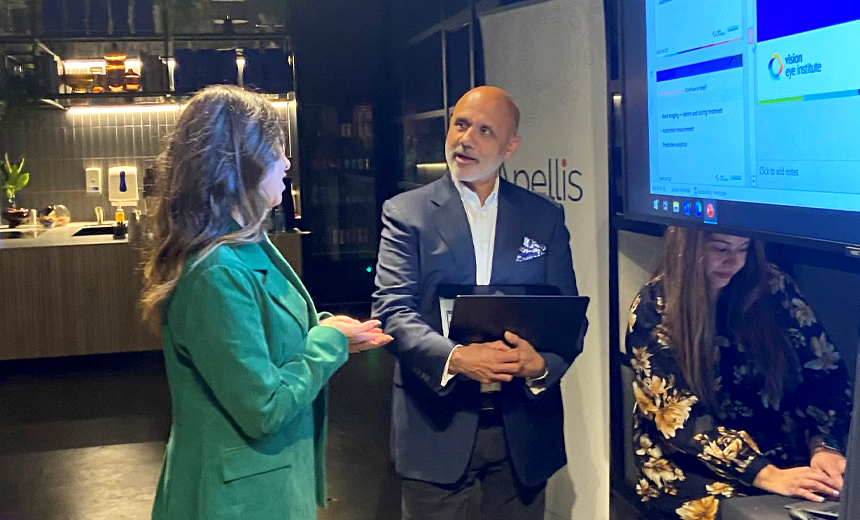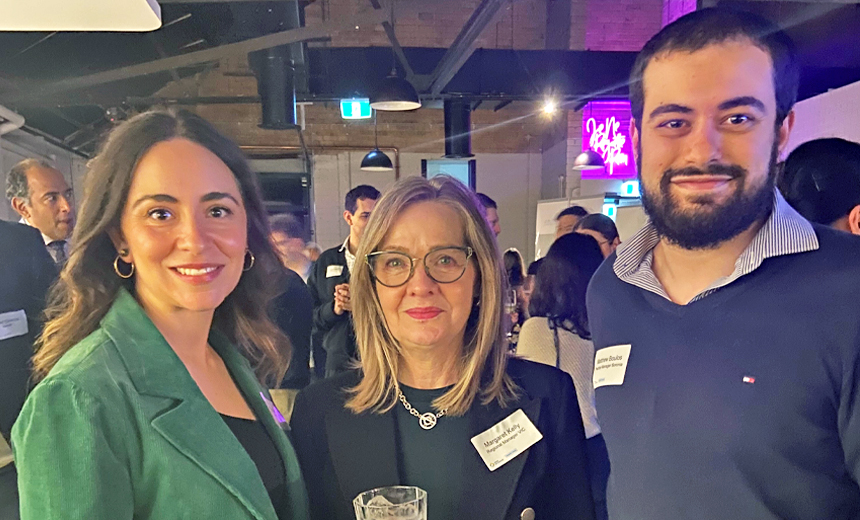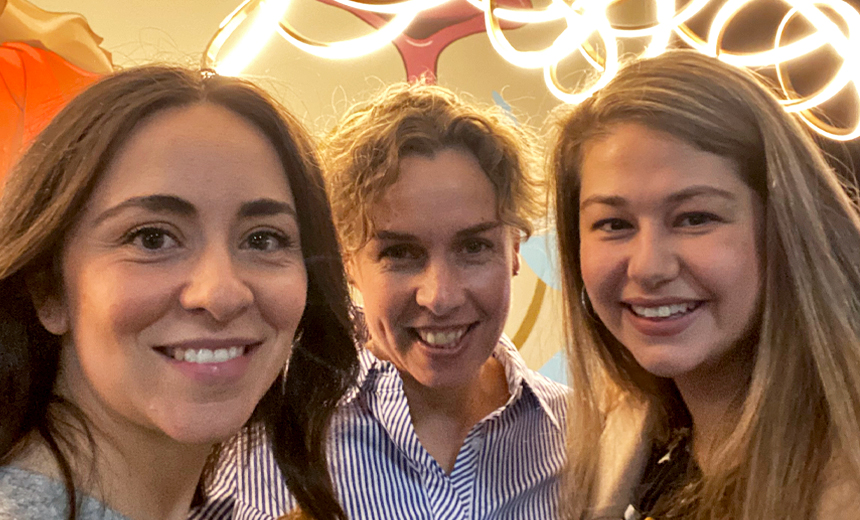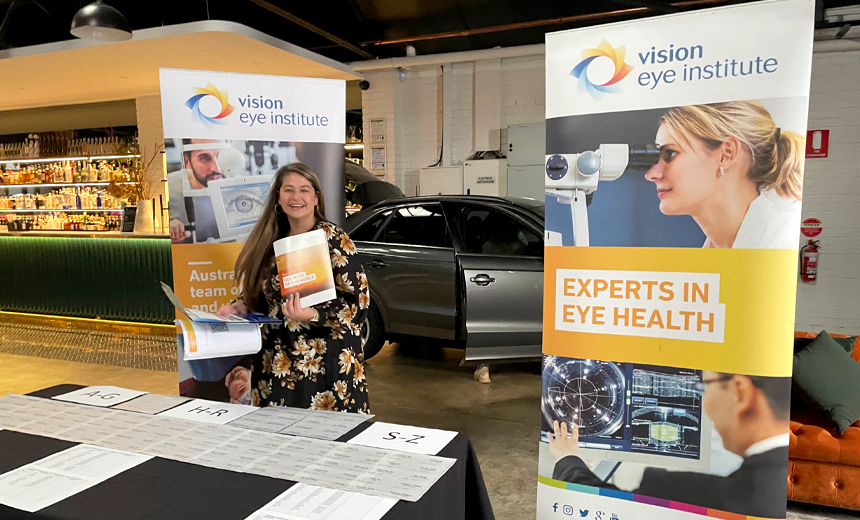We recently held a very successful Eye360 CPD event for optometrists, on the hot topic of geographic atrophy (GA).
The event featured presentations from Dr Alex Tan and Dr Devinder Chauhan, two highly regarded ophthalmologists who specialise in retinal conditions and consult at Vision Eye Institute Boronia.
Dr Tan began the session by providing a general introduction to GA, including discussion of a new potential treatment paradigm. Next, Dr Chauhan shared his insights on the diagnosis and treatment of GA. To round out the evening, Dr Chauhan provided an overview of the patient care available at Vision Eye Institute Boronia, with a focus on the use of faricimab.
The event also featured a panel discussion moderated by Kristina Iacovangelo, optometrist and Clinical Relationships Manager for Vision Eye Institute in Victoria. Questions were submitted by the audience and answered live by the doctors.
Here is some of the feedback received on the night:
‘Please hold more of these events: a really high quality presentation!’
‘So well organised, great Q+A sesh and presentations were excellent.’
‘I just wanted to say “thank you” for organising a most informative and enjoyable evening last night.’
‘Clinically relevant and not overly technical, great venue.’
We sincerely thank our event sponsor, Apellis, for their support. Apellis is a developer of therapies that affect the complement cascade, targeting GA.
Presentations
- Introduction to geographic atrophy
Dr Alex Tan
- Diagnosis and treatment
Dr Devinder Chauhan
- Boronia – a unique Victorian private clinic
Dr Devinder Chauhan
Key takeaways
Introduction to geographic atrophy
Dr Alex Tan
- GA is a progressive, advanced form of dry AMD:
- Characterised by atrophic lesions resulting from the loss of RPE, photoreceptors and choriocapillaris
- Leads to significant, irreversible loss of visual function
- GA is a leading cause of blindness in adults aged ≥50 years
- Even though central visual acuity is largely preserved until atrophy encroaches on the fovea, functional vision continues to decline as lesions grow
- BCVA over time may not fully capture GA progression
- BCVA is poorly correlated to lesion size
- Until recently, there were limited effective options for slowing down the progression of GA
- Current therapeutic options include visual rehabilitation, low-vision aids, Age-Related Eye Disease Study (AREDS) formula supplementation, smoking cessation, dietary modification and exercise
- A new treatment option, pegcetacoplan, may represent an opportunity to offer sight-saving treatment to patients with newly diagnosed GA:
- Pegcetacoplan is a complement inhibitor – it binds to C3 and C3b, inhibiting the downstream effects of the complement pathway
- Slows GA lesion growth
- Not yet TGA-approved nor PBS-subsidised; further studies are required to examine the long-term impact
Diagnosis and treatment
Dr Devinder Chauhan
- Diagnosis of GA is based on imaging (fundus photography, fundus autofluorescence, OCT)
- Examination alone is not sufficient for diagnosis
- It is easy to diagnose advanced GA with fundus photography, but early disease is less clear
- Autofluorescence may show areas of ‘sick’ or absent RPE
- Absent RPE (black appearance) is the common theme
- OCT is now the diagnostic gold standard – it demonstrates cell loss
- GA is characterised by cRORA (complete RPE and outer retinal atrophy)
- ‘Pre-GA’ is characterised by iRORA (incomplete RPE and outer retinal atrophy)
- Every patient will get worse and eventually lose vision, but treatment with a complement pathway inhibitor may slow the progression
- Treatment decisions include considerations of who and when to treat, how often to treat, whether the treatment is working (based on comparison against baseline rate of growth), and whether to continue or stop treatment
- To inform the decision about whether to continue or stop treatment, it is important to have thorough imaging before and during treatment, along with automated measurement and predictive analytics
Boronia – a unique Victorian private clinic
Dr Devinder Chauhan
- Boronia never charges out-of-pocket for injections
- Dedicated injection clinics such as Boronia are efficient, convenient for patients, and benefit from uniformity of procedures
- The process at Boronia is patient-centric:
- <30 minutes, ground floor, relatives can come in, there is a café next door, transport is facilitated, holiday injections can be arranged
- At every visit, the patient will have VA, history, OCT of both eyes, an exam if indicated
- Full topical anaesthetic and multiple antiseptic washes
- Boronia data:
- Fewer dropouts per year (and very few true dropouts)
- Consistent persistence, improving after 5 years (with several good reasons for non-persistence)
- Faricimab (Vabysmo) for ‘wet’ AMD and DME:
- New anti-VEGF agent
- Supposed to last longer and dry the macula better
- Became available in Australia in January 2023
- Macuject (clinical decision support software for macular disease) has been used to collect data on the use of faricimab from multiple clinics, including Boronia
- TRUCKEE study (14 US sites, 7 months) – 376 eyes, 3 injections
- Macuject study (5 Australian sites, 4 months) – 427 eyes
- Data from these studies will be available soon
Refer a patient
While the new treatment options for geographic atrophy are not yet available in Australia, patients may benefit from a baseline assessment and discussion of non-pharmacological measures to help prevent the condition or slow its progression.
If you would like to refer a patient to Vision Eye Institute Boronia, complete our referral form or call (03) 9890 4333.
Proudly sponsored by
